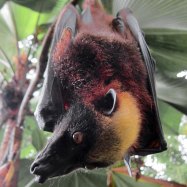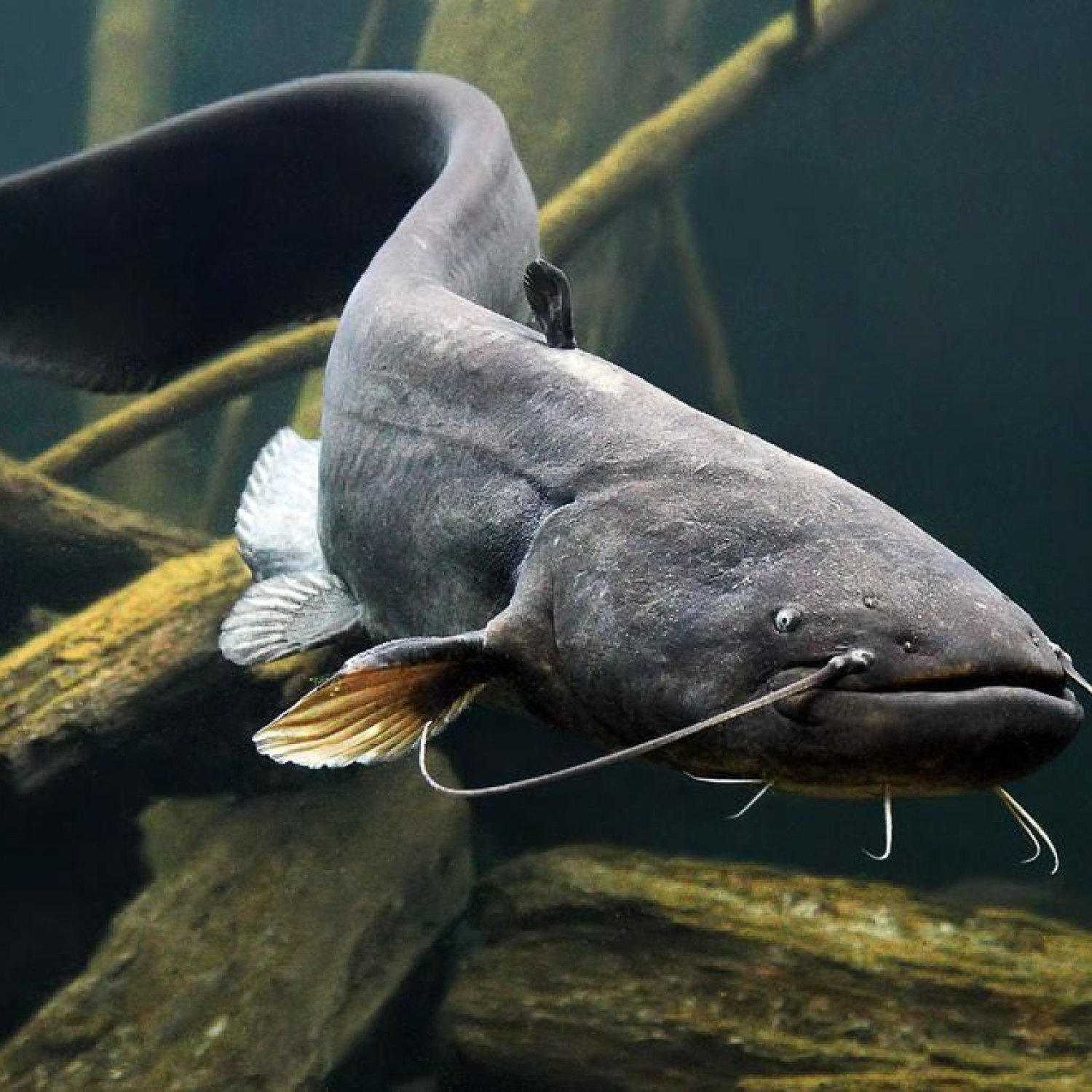
Wels Catfish
Up to 3 meters (9.8 feet)
The Wels Catfish, also known as the European Catfish, can reach lengths of up to 3 meters and is commonly found in rivers, lakes, and reservoirs. With its elongated and cylindrical body shape, this member of the Siluridae family is a formidable predator. Keep an eye out for this impressive fish on your next aquatic adventure! #WelsCatfish #EuropeanCatfish #Siluridae
Animal Details Summary:
Common Name: Wels Catfish
Kingdom: Animalia
Habitat: Freshwater
The Mighty and Mysterious Wels Catfish: The Apex Predator of European Waters
Rivers, lakes, and reservoirs across Europe are home to a predator that has captivated the imagination of anglers and scientists alike. This creature, known as the Wels Catfish, is a truly remarkable animal that holds many mysteries waiting to be unraveled.Scientifically known as Silurus glanis, the Wels Catfish is the largest freshwater fish in Europe and is a member of the Siluridae family. Its name is derived from the German word "wels" meaning catfish and the Latin word "glanis" meaning toothed fish Wels Catfish.
With its long, cylindrical body and dark brown to black coloration on the dorsal side, the Wels Catfish is easily recognizable. It can grow up to a staggering 3 meters (9.8 feet) in length, making it one of the largest freshwater fish in the world.
But what makes this fish truly fascinating is not just its size, but its unique characteristics and behavior. In this article, we will dive deep into the world of the Wels Catfish and explore its kingdom, habitat, feeding method, geographical distribution, and more.
The Kingdom of Wels Catfish
The Wels Catfish belongs to the Animalia kingdom, which includes all animals on Earth. Within this kingdom, it falls under the phylum Chordata, composed of animals that have a hollow nerve cord running from the head down the length of their bodies.As a member of the Actinopterygii class, the Wels Catfish is a ray-finned fish, meaning its fins are supported by bony or horny spines. It is further classified under the order Siluriformes, which includes all catfish species, making it a close relative of other well-known catfish such as the channel catfish and the flathead catfish Wallaby.
An Apex Predator of Freshwater Habitats
The Wels Catfish is primarily found in freshwater habitats, including rivers, lakes, and reservoirs, throughout Europe. Its native range covers various countries, including Spain, France, Germany, and other parts of Eastern Europe.One of the notable characteristics of this fish is its adaptability to different water conditions. It can thrive in both warm and cold waters, making it a versatile predator that can be found in diverse environments.
In its natural habitat, the Wels Catfish occupies the top of the food chain, earning its title as an apex predator. Its powerful jaws and sharp, needle-like teeth make it an excellent hunter, and it shows no mercy to its prey.
A Carnivorous Feeding Method
As a carnivorous fish, the Wels Catfish has a diet mainly consisting of other fish, but it has been known to prey on smaller mammals, birds, and even other catfish. It often waits in hiding, lying close to the bottom of the water, and using its excellent sense of smell to detect potential prey.Once it catches its prey, it swallows it whole, thanks to its expandable stomach that allows it to consume prey larger than its head. This feeding method makes the Wels Catfish a formidable predator, feared by other fish and humans alike.
The Mysterious Geographical Distribution of Wels Catfish
While the Wels Catfish is native to Europe, it has been introduced in many other countries, including the United Kingdom, parts of Asia, and North America. This widespread distribution has sparked debates and concerns about the potential negative impact of this fish on native freshwater ecosystems.Some studies suggest that the introduction of Wels Catfish in non-native environments can lead to a decline in native fish populations due to its predatory nature and potential spread of diseases. This makes it important to carefully manage and monitor the distribution of this species to maintain balance in aquatic ecosystems.
Uncovering the Wonders of Wels Catfish
Despite being a popular game fish, there is still much to be learned about the mysterious Wels Catfish. Scientists continue to study its behavior, biology, and ecology to better understand this creature and its role in the ecosystem.One of the most intriguing aspects of the Wels Catfish is its lifespan, which can range from 30 to 80 years. This makes it one of the longest-living freshwater fish species, with some individuals estimated to reach over 100 years old. The exact lifespan of this fish is still a subject of debate, and more research is needed to confirm these estimations.
Another area of interest is the Wels Catfish's breeding behavior. Similar to other catfish species, it is known to build nests in quiet areas near the riverbanks during breeding season. Females can lay up to 10,000 eggs, which are then guarded by the males until they hatch. Interestingly, this fish shows parental care, which is uncommon for most fish species.
The unique characteristics of the Wels Catfish make it a prized catch for many anglers, and in recent years, the popularity of fishing for this species has increased. However, the demand for Wels Catfish has also raised concerns about overfishing and the potential impact on its population. Strict regulations are now in place in many European countries to manage and protect this species.
The Wels Catfish: A Mystical Creature of Legends
Apart from its remarkable biology and behavior, the Wels Catfish has also captured the imagination of people through legends and folklore. In many European countries, it is known by different names, from the "sheatfish" to the "doomed catfish."One of the most popular legends surrounding this fish is its association with the Lorelei, a mythical siren associated with the Rhine River. According to the legend, a fisherman who catches a Wels Catfish will be granted three wishes by the siren. However, there is a catch - if the fisherman doesn't use all three wishes, he will be dragged into the depths of the river by the fish.
This legend, along with many other tales about the Wels Catfish, adds to the mystique of this creature and highlights its significance in European culture.
The Future of Wels Catfish
While the Wels Catfish continues to intrigue and fascinate us, its future is uncertain. Human activities, including overfishing, habitat destruction, and the introduction of non-native species, pose a threat to the survival of this iconic fish.Conservation efforts, such as the protection of spawning areas, monitoring of fish populations, and regulation of fishing practices, are crucial in ensuring the sustainability of this species. Additionally, educating the public about the importance of preserving the Wels Catfish and its habitat is essential in safeguarding this magnificent creature for future generations to enjoy.
In conclusion, the Wels Catfish is a unique and awe-inspiring creature that holds many mysteries within its elongated and cylindrical body. From its kingdom to its feeding methods, geographical distribution to its cultural significance, this fish continues to fascinate and intrigue us. As we strive to learn more about the mighty Wels Catfish, let us also do our part in preserving and protecting this apex predator of European waters.

Wels Catfish
Animal Details Wels Catfish - Scientific Name: Silurus glanis
- Category: Animals W
- Scientific Name: Silurus glanis
- Common Name: Wels Catfish
- Kingdom: Animalia
- Phylum: Chordata
- Class: Actinopterygii
- Order: Siluriformes
- Family: Siluridae
- Habitat: Freshwater
- Feeding Method: Carnivore
- Geographical Distribution: Europe
- Country of Origin: Various countries in Europe
- Location: Rivers, lakes, and reservoirs
- Animal Coloration: Dark brown to black on the dorsal side, cream-colored belly
- Body Shape: Elongated and cylindrical
- Length: Up to 3 meters (9.8 feet)
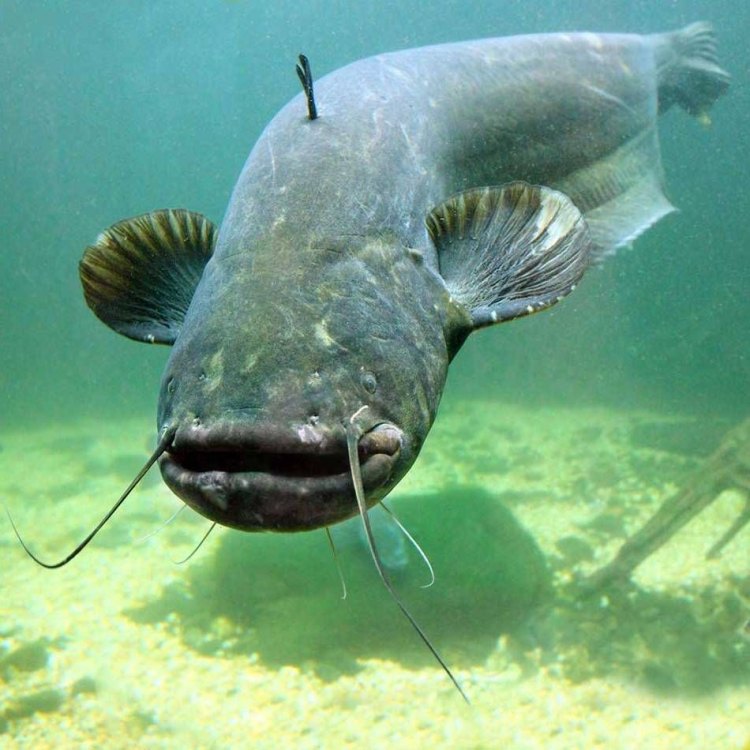
Wels Catfish
- Adult Size: Around 2 meters (6.6 feet)
- Average Lifespan: Up to 60 years
- Reproduction: Sexual
- Reproductive Behavior: Spawning
- Sound or Call: Produces grunting sounds during mating
- Migration Pattern: Migratory within their habitat
- Social Groups: Solitary
- Behavior: Nocturnal
- Threats: Overfishing, habitat loss
- Conservation Status: Least Concern
- Impact on Ecosystem: Top predator, helps regulate fish populations
- Human Use: Fishing, aquaculture
- Distinctive Features: Large size, whisker-like barbels on the upper jaw
- Interesting Facts: Can eat prey larger than itself, can survive out of water for short periods of time
- Predator: Humans, larger predators such as pike or otters
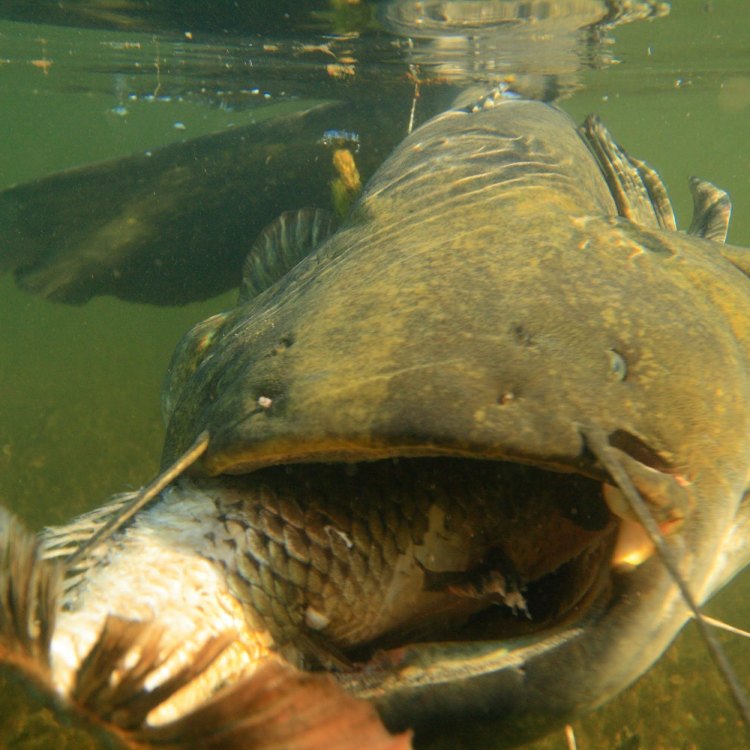
Silurus glanis
The Mighty Wels Catfish: A Fascinating Aquatic Giant
When we think of giants in the animal kingdom, we often imagine elephants, whales, or bears. But there is one creature that often goes overlooked despite its impressive size and longevity – the Wels Catfish. Found in the freshwater habitats of Europe, this immense fish is a true force to be reckoned with.With an adult size of around 2 meters (6 PeaceOfAnimals.Com.6 feet) and an average lifespan of up to 60 years, the Wels Catfish is the largest freshwater fish in Europe, and one of the largest in the world. Its sheer size, along with its unique features and behaviors, make it a fascinating species to study and learn about.
In this article, we will delve into the world of the Wels Catfish, exploring its biology, behavior, and impact on the ecosystem. So dive in and discover the mighty and mysterious Wels Catfish.
Anatomy and Physical Characteristics
The Wels Catfish, also known as the Silurus glanis, is a species of catfish native to rivers and lakes in Europe. It is typically distinguished by its long, scaleless body, broad head, and large, wide mouth filled with rows of sharp teeth. Its body is usually dark brown or green in color, with a white or yellow belly.But what truly sets the Wels Catfish apart are its distinctive features – its size and its barbels. As mentioned earlier, it can grow up to 2 meters (6 Weimardoodle.6 feet) in length, with some individuals reported to reach even larger sizes. In terms of weight, they can weigh as much as 150 kg (330 lbs). This makes them larger than most other freshwater fish in Europe, including the Pike, Carp, and Salmon.
Additionally, on the Wels Catfish's upper jaw are whisker-like barbels, much like those seen on the face of a cat – hence its name. These barbels, along with their keen sense of smell, are used to locate prey in murky waters. They are also used in communication and navigation, making them an important part of the Wels Catfish's anatomy.
In terms of reproductive behavior, the Wels Catfish follows a sexual reproduction method. When it's time to mate, the males produce grunting sounds, which can be heard by human ears, to attract females. After mating, the female deposits her eggs in cavities or holes in the riverbed, and the males then fertilize them. This behavior, known as spawning, typically occurs during late spring or early summer.
Behavior and Habits
The Wels Catfish is primarily a solitary creature, preferring to live and hunt alone rather than in groups. It is also a nocturnal species, meaning it is most active at night. This behavior may be due to the fact that they have better opportunities for hunting and feeding when the cover of darkness shields them from being seen by potential predators.While they are not known to migrate long distances, they have been observed to move within their habitat, especially during the spawning season. This migration pattern allows them to adapt to changing environmental conditions and find suitable spawning sites.
One of the most interesting facts about the Wels Catfish is its ability to survive out of the water for short periods of time. This behavior has been observed when the water levels are too low, forcing the fish to navigate through muddy, shallow waters. This survival mechanism is possible due to a specialized organ in their gills that allows them to breathe air. However, this behavior has also been seen in captivity when they are handled or transported.
Threats and Conservation Status
Like many other species, the Wels Catfish population faces various threats, including overfishing and habitat loss. Due to their large size, they are prized by anglers, and their meat is considered a delicacy in some countries. This has led to overexploitation, especially in some areas where they are commercially fished.Habitat loss, primarily from the construction of dams and other infrastructure, also poses a threat to the Wels Catfish. Dams can block their migration routes, disrupt their breeding patterns, and reduce their available habitat, ultimately impacting their population size.
Despite these threats, the Wels Catfish is currently listed as least concern on the IUCN Red List of Threatened Species. This is thanks to conservation efforts such as regulating fishing practices and protecting their habitats.
Role in the Ecosystem
As top predators, Wels Catfish play an essential role in regulating fish populations in their habitats. As such, they are considered a keystone species, meaning their presence is vital to the health and balance of the ecosystem. Without them, there could be an overabundance of smaller fish, leading to competition for resources and potentially disrupting the food chain.Wels Catfish also feed on a wide range of prey, including small fish, crustaceans, frogs, and even birds and small mammals. This diverse diet helps maintain the balance of the aquatic ecosystem and prevents the overpopulation of certain species. Therefore, the presence of Wels Catfish is crucial in maintaining the overall health of freshwater habitats.
Human Use and Conservation Efforts
Despite being considered a delicacy in some areas, the Wels Catfish is not extensively farmed for consumption. However, it is commonly used in aquaculture, where it is bred for fishing and to restock depleted populations in the wild. This practice helps reduce the pressure on wild populations and ensures a sustainable supply of Wels Catfish for human consumption.Additionally, there has been an increase in the catch and release of Wels Catfish by anglers, contributing to the conservation efforts for this species. Through catch and release, anglers can continue to enjoy the thrill of catching this gigantic fish while also helping preserve its population.
There have also been efforts to educate the public about the importance of conserving the Wels Catfish and its habitat. This includes promoting responsible fishing practices and raising awareness about the potential impact humans can have on this species and its ecosystem.
Predators and Interesting Facts
Despite their large size, Wels Catfish have their own set of predators. Humans are one of the primary predators, mainly due to overfishing, but also due to their role in the food industry and agriculture. Other potential predators include larger fish species such as Pike and Otters, who may feed on younger or smaller Wels Catfish.One of the most intriguing facts about the Wels Catfish is its ability to eat prey larger than itself. Due to their wide mouths and rows of sharp teeth, they can consume prey such as ducks and other birds, as well as small deer or pigs that may wander near the water's edge. This has led to various myths and legends about giant catfish swallowing humans whole, although there is no documented evidence of this ever occurring.
Another interesting fact is that the Wels Catfish is believed to have inspired the legend of the Loch Ness Monster. Its appearance and behavior, such as swimming near the surface and the ability to survive out of water, have led to speculation that it may be the creature behind the well-known Scottish myth.
In Conclusion
The Wels Catfish is a truly remarkable and mysterious creature. It's hard to imagine a freshwater fish reaching such immense sizes and living for up to 60 years. But beyond its size and longevity, the Wels Catfish plays a crucial role in the ecosystem, and its unique biology and behaviors make it an intriguing species to study and observe.While it faces threats and challenges, efforts to conserve and protect this species are ongoing. By understanding and appreciating the value and importance of the Wels Catfish, we can help ensure its survival for future generations to come. So let us continue to marvel at this aquatic giant and do our part in preserving its place in the freshwater landscape.
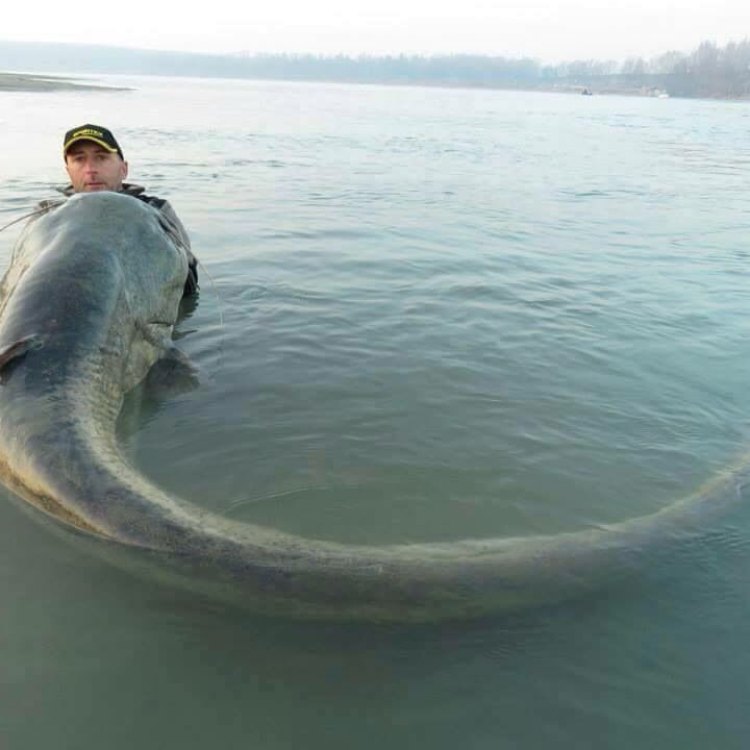
The Mighty and Mysterious Wels Catfish: The Apex Predator of European Waters
Disclaimer: The content provided is for informational purposes only. We cannot guarantee the accuracy of the information on this page 100%. All information provided here may change without prior notice.












